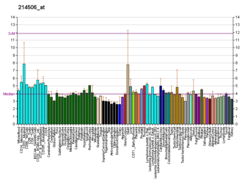| GPR182 | |||||||||||||||||||||||||||||||||||||||||||||||||||
|---|---|---|---|---|---|---|---|---|---|---|---|---|---|---|---|---|---|---|---|---|---|---|---|---|---|---|---|---|---|---|---|---|---|---|---|---|---|---|---|---|---|---|---|---|---|---|---|---|---|---|---|
| Identifiers | |||||||||||||||||||||||||||||||||||||||||||||||||||
| Aliases | GPR182 , 7TMR, ADMR, AM-R, AMR, G10D, gamrh, hrhAMR, G protein-coupled receptor 182, L1-R | ||||||||||||||||||||||||||||||||||||||||||||||||||
| External IDs | OMIM: 605307; MGI: 109545; HomoloGene: 5255; GeneCards: GPR182; OMA:GPR182 - orthologs | ||||||||||||||||||||||||||||||||||||||||||||||||||
| |||||||||||||||||||||||||||||||||||||||||||||||||||
| |||||||||||||||||||||||||||||||||||||||||||||||||||
| |||||||||||||||||||||||||||||||||||||||||||||||||||
| |||||||||||||||||||||||||||||||||||||||||||||||||||
| |||||||||||||||||||||||||||||||||||||||||||||||||||
| Wikidata | |||||||||||||||||||||||||||||||||||||||||||||||||||
| |||||||||||||||||||||||||||||||||||||||||||||||||||
GPR182 (or G protein-coupled receptor 182) is a human gene (and associated protein) which is an orphan G-protein coupled receptor. [5]
Contents
When this gene was first cloned, it was proposed to encode an adrenomedullin receptor. [6] However, when the corresponding protein was expressed, it was found not to respond to adrenomedullin (ADM). [7]
It was subsequently shown that a different GPCR, CALCRL when complexed with RAMP2 can function as an ADM receptor. [8]




